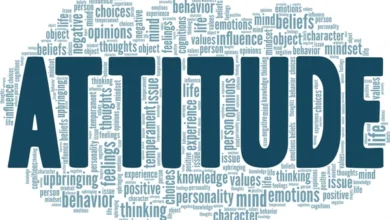The Unsent Project: A Raw Look Into Love, Loss, and Digital Confessions

In the digital age, where nearly every human interaction leaves a traceable footprint, there is a hauntingly poetic corner of the internet that thrives on what was never meant to be seen. The Unsent Project also known simply as the unsent message project is a social experiment turned emotional archive, capturing anonymous, unfiltered messages people would have sent to their first loves. It’s a place where sentiment lingers, confession flows freely, and vulnerability becomes art.
Founded by artist Rora Blue in 2015, the project has grown into a worldwide phenomenon, inviting people from all walks of life to release the words they never had the courage or opportunity to send. In doing so, it has become an evolving reflection of modern love, heartbreak, and the nuanced emotional terrain of the digital generation.
Origins of the Unsent Project: Where It All Began
The concept behind the Unsent Project is disarmingly simple: If you could send a text message to your first love, what would you say? What words have been sitting silently in the corners of your heart? Rora Blue initially launched the project as a way to explore the complexities of unspoken communication and to give a platform to the thoughts we bury. What started as a small artistic inquiry quickly snowballed into a global database of emotion, eventually amassing over five million submissions from around the world.
Blue’s mission went beyond art—it became about emotional release, digital storytelling, and the psychology of unrequited or unresolved feelings. The anonymous nature of the submissions gives contributors a safe space to unload emotional burdens without judgment, fear, or repercussion. This framework taps into something deeply human: the need to be heard, even if the listener is never identified.
The Format: Color-Coded Emotions and Creative Anonymity
A unique aspect of The Unsent Project is the way each message is accompanied by a color the color the sender associates with their first love. This artistic choice transforms what could simply be read as digital diary entries into something visually poetic. Pink might signify warmth or youth, while blue could represent sadness or serenity. The color palette becomes an emotional lexicon, offering insights into how people experience and categorize their feelings.
There is no character limit. Messages range from short fragments like “I miss you every day” to longer, confessional entries that read like open letters. Some are filled with anger, others with longing, nostalgia, or even closure. The lack of censorship and the open-ended prompt allows for a tremendous range of emotional expression raw, messy, and beautifully human.
The Emotional Weight of Unsent Messages
At the heart of this project is the notion that what we leave unsaid can be just as powerful as the words we do speak. Many of the submissions reveal unresolved trauma, lingering questions, and heartfelt apologies. There’s pain in silence, and The Unsent Project gives that pain a platform to breathe.
Reading through the entries can be a deeply emotional experience. It feels like flipping through someone’s personal journal intimate, real, and sometimes devastating. For readers, it’s a reminder that love and loss are universal experiences. For contributors, it’s often a cathartic act of letting go.
Some messages scream with heartbreak:
“You loved her more, didn’t you?”
Others whisper with regret:
“I wish I hadn’t walked away.”
And a few radiate hope, even in the absence of a response:
“If this ever reaches you, just know I’m still rooting for you.”
These are not just texts they are emotional artifacts, snapshots of the human experience frozen in digital ink.
The Power of Anonymity: Speaking Freely in a Filtered World
In a world where most of our digital lives are curated for perfection filtered selfies, crafted captions, algorithm-approved engagement the raw, anonymous nature of The Unsent Project stands in stark contrast. The lack of identifiers means people are free to expose their most authentic selves. They don’t have to worry about being misunderstood, judged, or rejected.
This anonymity acts as both a shield and a magnifying glass. A shield, because it protects the submitter from the consequences of their truth. A magnifying glass, because it brings into focus the true weight of their emotion, without distraction. It is this balance that makes the Unsent Project both powerful and profoundly moving.
Cultural Impact and Global Resonance
Since its inception, The Unsent Project has attracted millions of submissions from all over the globe. It transcends borders, languages, and cultures proof that the need for emotional expression is universal. Whether you grew up in Tokyo or Texas, the feelings of a first love lost or a message unsent are relatable. The project has also sparked similar initiatives and inspired people to create art, write poetry, and even build their own digital confession platforms.
Social media has played a massive role in spreading the project’s reach. On platforms like TikTok and Instagram, people often share their favorite unsent messages or even write response pieces to ones that resonate with them. In doing so, a feedback loop of empathy is created, allowing strangers to find solace in each other’s stories.
Celebrities and influencers have also contributed or shared the project, further amplifying its reach. But its real power lies not in virality, but in vulnerability.
A Mirror for the Modern Heart
The Unsent Project also serves as a mirror reflecting how love is experienced in a hyper-connected world. In an age of ghosting, situationships, and digital detachment, the project captures the emotional aftermath that tech alone cannot erase. It becomes a quiet rebellion against emotional suppression, encouraging people to confront their feelings rather than swipe them away.
Moreover, the project invites introspection. By reading others’ messages, one can’t help but think about their own unsent words. What would you say to the one that got away? What feelings have you been carrying without release? In this way, the project not only captures emotion it evokes it.
Criticism and Controversy: The Double-Edged Sword of Vulnerability
Despite its largely positive reception, The Unsent Project is not without criticism. Some argue that the platform can romanticize unhealthy emotional attachments or encourage people to dwell on the past rather than move on. There are concerns that certain messages especially those expressing obsessive or harmful thoughts might trigger readers or contributors.
Others question the ethics of digital confession: Is it healthy to broadcast deep emotional wounds in a public forum, even anonymously? Does it foster healing or hinder it? These are valid concerns, yet they also underscore the very essence of the project human emotion is messy, complicated, and often without clear answers.
Rora Blue has responded to some of these critiques by reminding readers that the project is about expression, not prescription. It is not therapy, but it can be therapeutic. It is not closure, but it may open doors to understanding. And perhaps that’s enough.
Educational and Therapeutic Potential
Interestingly, The Unsent Project has also been explored in academic and mental health settings. Some therapists use it as a conversation starter with patients. Universities have incorporated it into psychology or digital media studies courses, exploring themes such as emotional intelligence, digital identity, and communication theory.
For individuals who struggle with verbalizing their feelings, seeing others express similar thoughts can be incredibly validating. It reduces the sense of isolation and promotes emotional literacy a skill increasingly vital in today’s mental health climate.
The Future of The Unsent Project
What lies ahead for The Unsent Project? As it continues to grow, it faces both exciting opportunities and difficult questions. Will it become a published anthology? Could it evolve into a documentary or an interactive exhibit? There’s no shortage of potential.
Rora Blue has already begun expanding the project’s reach with curated art installations and limited-edition prints. Each iteration adds another layer of depth, another way for people to engage with the content and themselves. Yet at its core, the project remains unchanged: a safe space to speak the unspeakable.
As AI-generated content becomes more pervasive and digital communication more fragmented, projects like this become all the more essential. They remind us of what it means to be human. To feel deeply. To say too much or nothing at all.
Conclusion:
The Unsent Project is more than just a website. It’s a testament to the enduring power of unspoken emotion in a world obsessed with expression. It is where art meets vulnerability, where the digital meets the deeply personal. And perhaps most importantly, it’s where strangers connect not through knowing each other’s names, but through the silent weight of words left unsaid.
Whether you’re someone who has sent an unsent message or someone who simply reads them in the quiet hours of the night, this project leaves an imprint. It reminds us that we are not alone in our longing, in our grief, or in our hope. The digital may be fleeting but the human heart, in all its messy, beautiful complexity, remains timeless.



